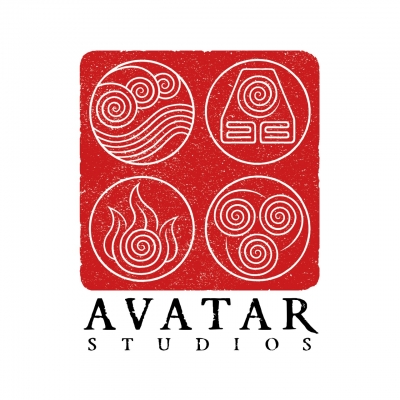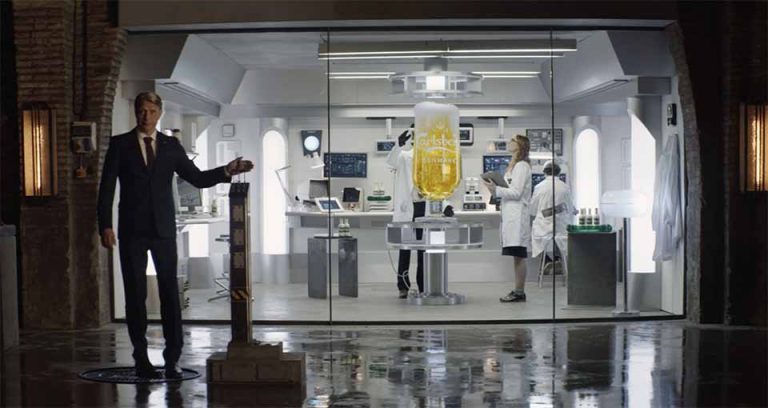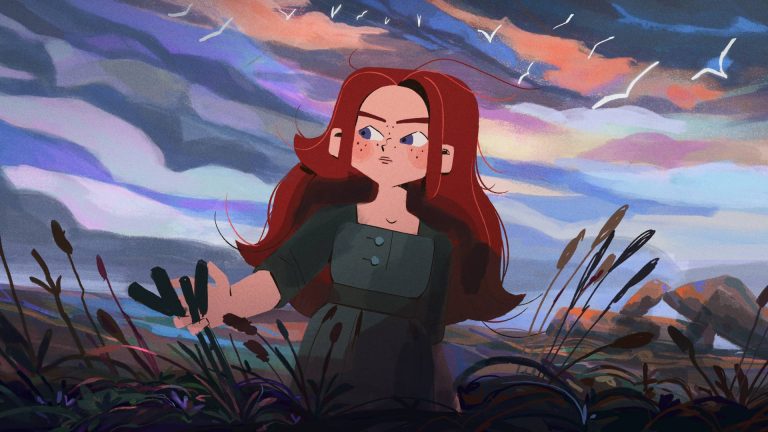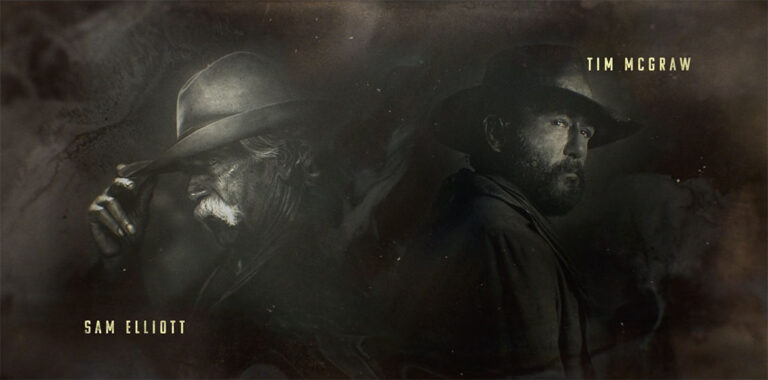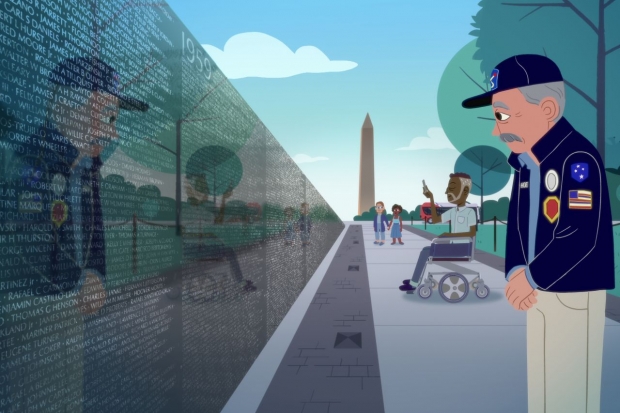
Rauch concurs, adding, “We wanted the pieces to look as different as possible from one another. And for each of the directors to really be fully invested in bringing what it is they do to the table. These are 10 of the best. Why mess that up by getting in their way?”
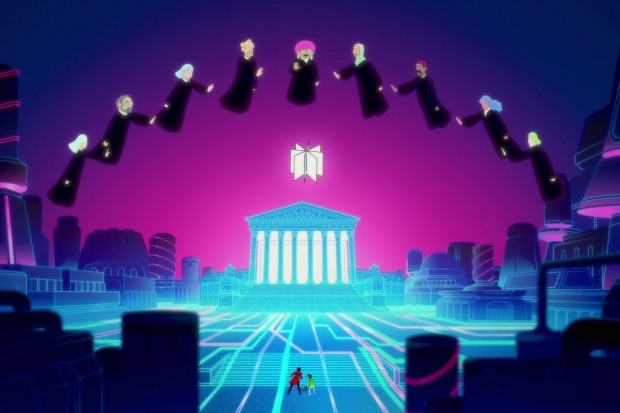
“I was probably thinking of the feeling of Schoolhouse Rock! and their approach to color, which was simple, bold, and just felt energetic and fun,” recalls Ramsey. “And I think there was a sense of nostalgia about wanting to recapture some of that feeling, but then see where we could take it, see where we could push it. The story was about going from isolation to oneness with the whole world, so the idea of telling that story through color and making it into a celebration by the end was something that just seemed to fit naturally.”
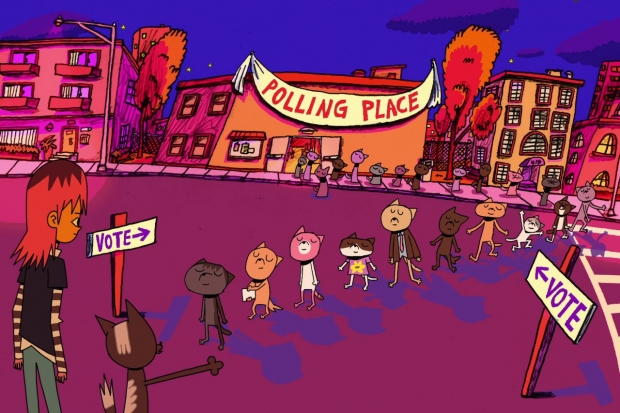
But even with so many different musical and visual styles, produced by a mix of creators with vastly different backgrounds and experience levels, all 10 We The People episodes successfully come together in an eclectic mix of vibrant color.
“Schoolhouse Rock! is an extraordinary piece of work, and it has obviously stuck with so many people over so many years, but it was also forced on us,” she explains. “You didn’t have to choose to watch it. It aired in the afternoon on one of the only two channels that had kids programming. Now we’re in a world where there are so many different things you can choose to click on, and we needed people to click on civics. That’s part of the reason why we wanted to do 10 animation styles that have unique points of view and get 10 of the best musical artists to actually write the songs. It was all about making it feel extraordinarily authentic, because that’s the only way we were going to get our target audience to actually choose to watch it.”
And to Ramsey, the messages go beyond politics.
10 music videos, based on 10 songs from 10 all-star singer-songwriters, animated in 10 unique art styles by 10 top directors, premiering on Netflix July 4, America’s Independence Day, all to give our nation a rockin’ good lesson in civics.
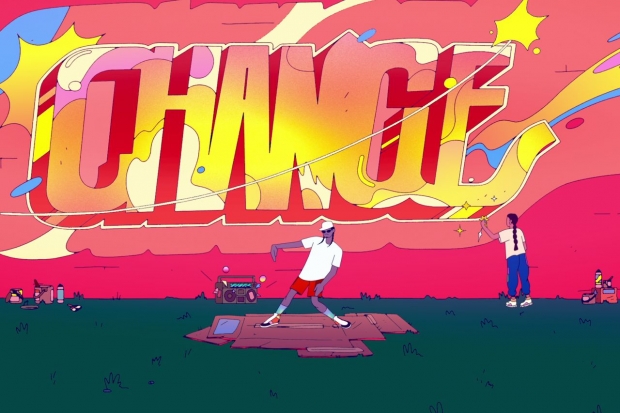
“I’m a big believer in finding the right people and letting them do what they do,” Nee continues. “So, there was not a ton of micromanaging about what vision each director and songwriter brought to the project once they got started. We picked them because they’re the best. Our job was to support and let them do what excites them.”
“This project was set up from the beginning to be authentic and to authentically represent the idea of “We the People” and the things that we’re talking about,” says Nee. “I think the ethos of the project spilled into everything we did.”

“To me, the stroke of genius that takes the Schoolhouse Rock! idea into now is the caliber of the recording artists,” says Ramsey, who directed the episode “Active Citizenship” to the song “Change” by H.E.R. “These are people who get radio airplay every single day.”
“You know, the thing I related to most about H.E.R.’s song was the line, ‘If I’m just one person, will my voice even stand out?’” he says. “You could use that same line in a lot of different contexts, not just politics. I think this project was also about taking some of that information and giving it context, so it’s not just a list of facts, but something where you can feel the emotion behind it.”
We The People, a brand-new animated musical series produced by Higher Ground Productions and Laughing Wild, draws its inspiration from Tom Warburton’s seven-season Schoolhouse Rock!, the award-winning 1974 TV special Free to Be…You and Me, and the famous Tony Award-winning Broadway musical, Hamilton.
Nee notes that this is one of the most collaborative projects she’s ever worked on; she hopes the idea of coming together and “oneness,” that’s so clearly expressed in Ramsey’s first episode and in the project as a whole, spreads to viewers and their own outlook on getting active in local governments and communities.
He adds, “Older kids, they’re dealing with taking their place in the world. And [we’re trying to address] this whole idea of them having a voice and wanting to use it, feeling some sense of responsibility in society, but not knowing how to manage that, or how to take their first steps. I think hitting young people at the right time, and in the right way, becomes all that much more important.”
But Nee, the Peabody, Humanitas, NAACP, and Emmy Award winner known for her Disney Junior series Doc McStuffins, didn’t want to just create a 2021 version of Schoolhouse Rock! She wanted her own passion for civics to ignite the same interest in viewers.
Ramsey’s “Active Citizenship,” the first episode in the series, starts out with a young girl unsure of how to make her struggling community thrive. Initially covered in tones of unenthused greys, as the girl learns more about the power of her own voice, color begins to flood her neighborhood: green trees are planted in parks, pink and orange murals are painted on buildings, and bright blue check marks appear on voting ballots.
Nee adopted a very hands-off approach with her creative team, believing that the individual voices of her 10 artists and directors should lead the way in each episode. She notes, “The piece that Victoria did is one of my favorites. I never could have imagined taxes and cats. It’s so, so good. And it’s because we didn’t get in the way.”
Nee was also adamant about the series providing a platform for up-and-coming animators and filmmakers like Victoria Vincent, mostly known for her short films like Catscape and Mask Dog. True to her animal-loving body of animated work, Vincent directed the episode “Taxes,” which features cats explaining the importance of taxes to their owners narrated by the musical stylings of rapper Cordae. Using her own cat as inspiration, Vincent said animating the episode, coming up with a “fun representation” for taxes, was an exciting challenge. “I thought, ‘What is something really funny?’ And that’s cats, so I just went with that immediately and it ended up working,” she says. “My cat, and just all cats in general, are so funny. They’re always up to goofy stuff. They’re in their own little world of mischief. So, I got a lot of ideas right away.”
BoJack Horseman director Tim Rauch, who served as We The People’s supervising director and directed the episode “Federal vs. State Power,” added, “You want to entertain. At the end of the day, we’re making entertainment. Yes, it’s informational. But if it’s not entertaining, it’s not anything. If you’re not locked in with the audience, they’re not gonna hear anything you’re saying.”
Victoria Davis is a full-time, freelance journalist and part-time Otaku with an affinity for all things anime. She’s reported on numerous stories from activist news to entertainment. Find more about her work at victoriadavisdepiction.com.
“It’s a call to action,” says creator Chris Nee. “That’s what we’re saying at the very beginning. You have the power to get involved. Now, we’re going to give you some of the nuts and bolts. We had so many people who were at the top of their game, giving their best to this project.”
[embedded content]
“The two years that we’ve been working on this project were dark years for a lot of different reasons,” says Nee. “Politically, our country was in crisis, the George Floyd process, and BLM was happening. We were in a lockdown. We were in a pandemic. And I was amazed at how often joy seemed to come through in this project. Even for Peter’s piece, which started with this really desaturated color space, he still brought it to a place of joy. We didn’t seem to have to push people to find that color and light in the project.”
The series tackles topics such as active citizenship, taxes, and federal versus state power, among others. Executive produced by Black-ish’s Kenya Barris along with Barack and Michelle Obama, We The People takes viewers back to the basics of politics, building the same strong educational foundations, for viewers young and old, that Schoolhouse Rock! did so ably from the 1970s to the early 2000s.

Recruiting top talent in the animation sphere like Rauch, Oscar-winning Spider-Man: Into the Spider-Verse director Peter Ramsey, Hair Love’s Everett Downing Jr., Robot Chicken’s Trisha Gum, and others filled the series with 2D animation that was clean and bold, grungy and detailed, scrap-book styled as well as looking hand-painted. And musical artists like R&B singer H.E.R., retro soul artist Janelle Monáe, alternative rocker Brandi Carlile, and pop icon Adam Lambert, along with Hamilton’s Lin-Manuel Miranda, helped Nee and her fellow producers make sure a wide range of voices, backgrounds, and styles were represented in their show.



